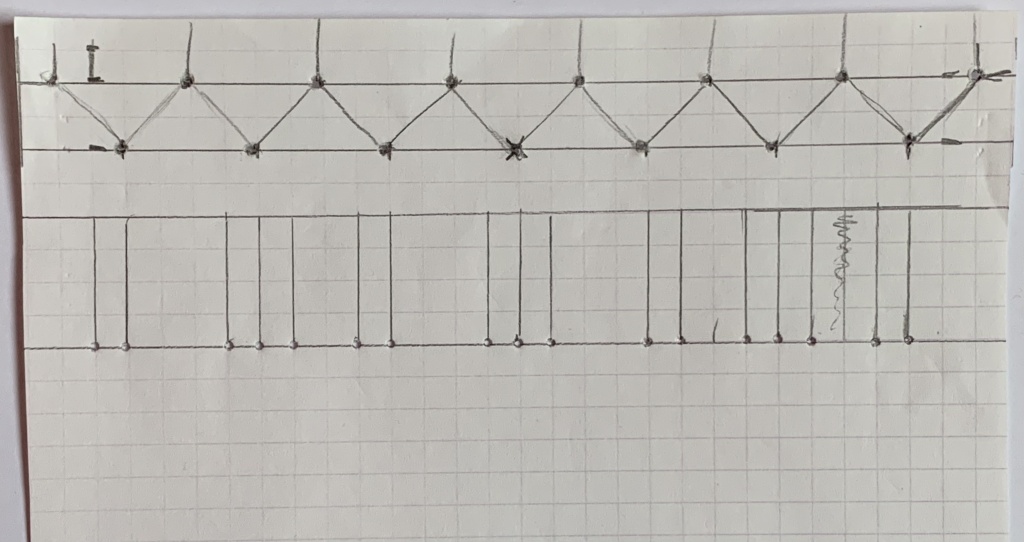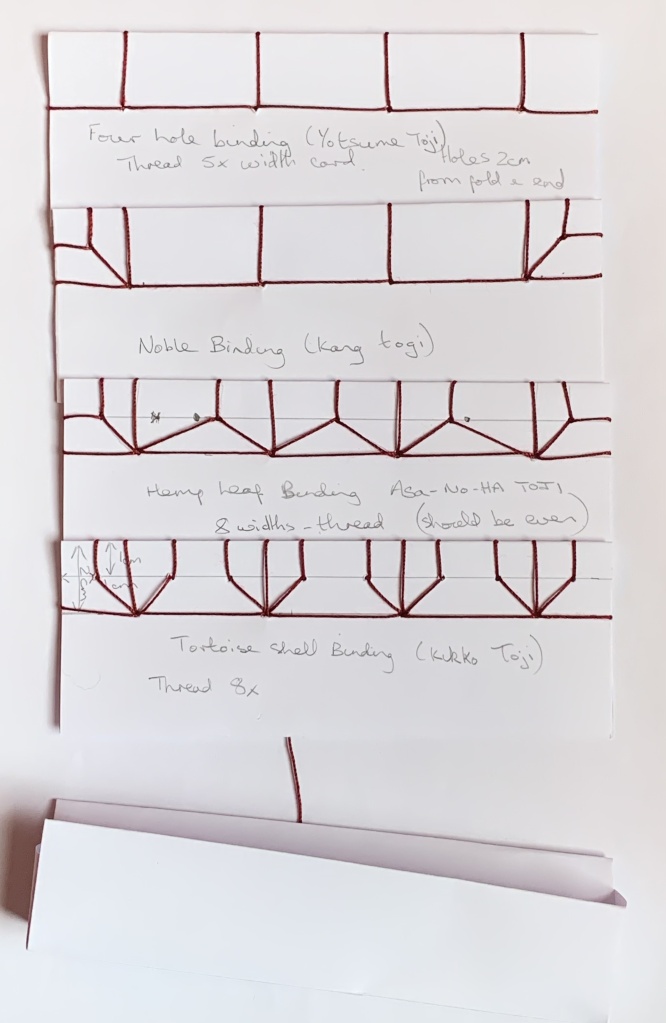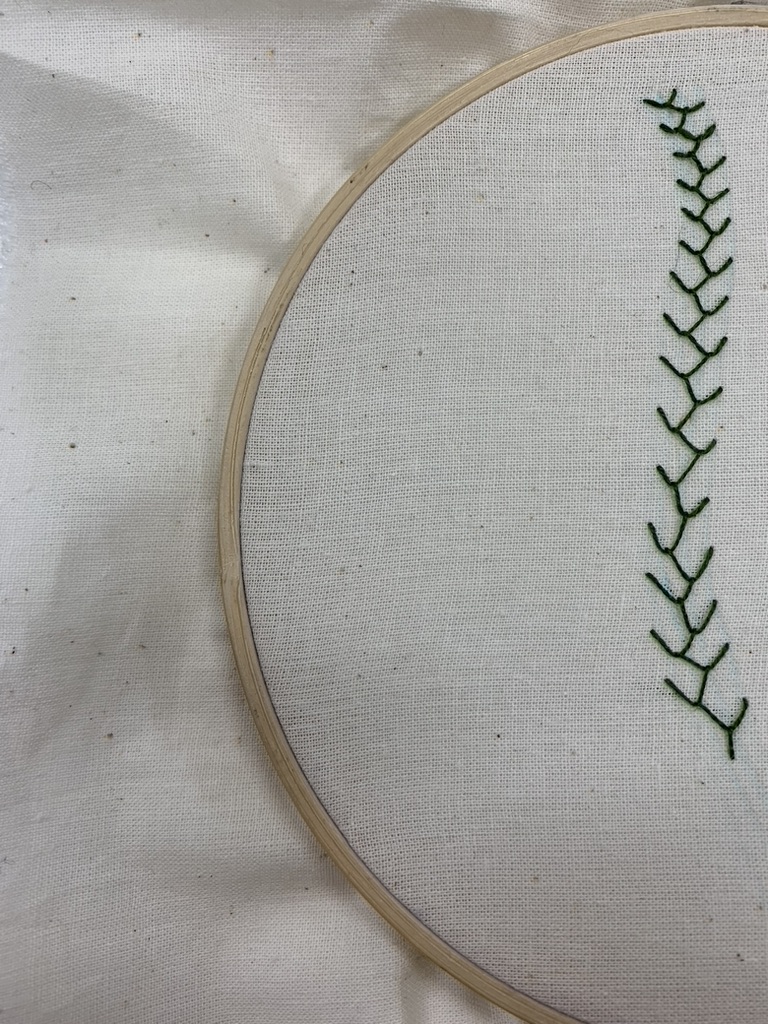
It was decided in the summer that the SEATA group would do geodes as well as travelling books, starting at the September meeting. The travelling books group had got much smaller. I opted out a while ago. When the format changed, I found that it didn’t spark my imagination in the way responding to what was already in the book had done. Two pages on a drawn-out topic just wasn’t the same.
All the participants had to set up a 6″ or 8″ hoop with a background fabric of their choice. Then put it in a bag with a little notebook, pencil and any guidelines or instructions (stitches or colours for example), and add any threads or notions if they wanted to, ready to be picked up by somebody else taking part. The idea is to work one row, inside the previous row make a few notes in the little book – stitch, thread used etc., and SIGN the page, so we know who has done what on our geode, put it back in the bag ready for it to be passed on next month.
This is where the travelling books fell down sometimes, if somebody wasn’t at the next meeting to pass on and collect the next one on the list. We tried various ways to try and reduce the problems, but some groups got in a real muddle at times. It was decided that if you missed a meeting, just to do another row and pass on next time with the geode.
I was dithering on my background fabric but, while looking for something else, I came across a little paper bag with these autumn-coloured tree “buttons” in, long forgotten my original intention with them. However, I decided they would make a perfect border for my finished wood / forest / trees geode on this dark background fabric.

I found this variegated slubby yarn …..

….. and couched it down. I’ve put the trees in the bag, so they can be stitched down at the end. (They would catch on threads while stitching if I’d put them on at the beginning.)

This is how it looked at the October meeting, thanks to Sue.

I chose this lovely green hoop for my first pick, and by chance it happens to be Sue’s. The only confusion so far seems to have been that some of us had done our own first row and some hadn’t, but not a problem. I used this dark purple thread to do Coral knot stitch, deliberately not making it a perfect circle.

The one I picked up at the October meeting was Lorraine’s, with the gold (the top photo) already stitched. She wanted shiny and blingy, so I’ve used a deep pink Anchor Marlitt for a random buttonhole stitch.

I don’t know who took mine last month, so it will be fun to see how it has progressed.




















